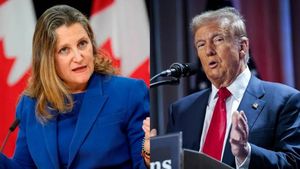Durango, Colorado — The world is witnessing unprecedented shifts as natural disasters become more frequent and severe, putting immense pressure on the home insurance industry. Amidst devastating fires and unpredictable weather, homeowners are grappling with soaring premiums and diminished coverage. This ever-increasing risk environment is largely attributed to the overarching effects of climate change, which have disrupted the insurance market.
The statistics are troubling. From 2017 to 2022, homeowners' insurance premiums surged by over 40%, significantly outpacing the inflation rate. Homeowners now find themselves caught between rising costs and the crumbling availability of coverage, as many insurers withdraw from high-risk areas entirely.
Insurance companies are faced with record-breaking payouts for claims arising from hurricanes and wildfires, and these costs are trickling down to policyholders. "On average, across the state, about 50 to 60 percent of the premium... is for hail risk..." explained Michael Conway, Colorado's State Insurance Commissioner, highlighting the increasing financial burden homeowners face when dealing with natural risks.
This is particularly poignant for those living in states like California, Texas, Florida, and Colorado, where the frequency of extreme weather events has prompted insurance companies to reevaluate their coverage strategies. With some insurers even refusing to cover homes altogether, homeowners are forced to navigate the perilous waters of inadequate protection.
The consequences of these trends extend beyond individual homeowners as well. Diminished property values due to heightened insurance risks can contribute to local economic instability. The stark reality is this: if home values plummet, tax revenues used to fund schools and police departments also decline. The political pressure for intervention grows as communities wrestle with the fallout from these insurance crises.
The Brookings Institution recently noted, "the inconvenient truth is... premiums will need to increase in high hazard areas to reflect climate risk exposure..." Such statements underline the pressing need to address the role of climate change within the insurance framework.
To remedy these challenges, several states are proposing innovative legislative measures aimed at stabilizing the insurance market. Colorado, for example, is developing state enterprise funds intended to mitigate the impact of natural disasters on home insurance costs. These funds may support initiatives such as grants for homeowners to install hail-resistant roofs, thereby reducing overall risk.
Conway has voiced support for innovative approaches, noting, "we’re certainly interested in finding those innovative ideas and being as creative as we possibly can be to help stabilize the market." His perspective signals hope among industry insiders and policymakers who recognize the need for meaningful change.
The proposed legislation would facilitate the installation of hail-hardened roofs through grants, offsetting the costs for homeowners. An estimated investment of $3,000 to $5,000 to fortify roofs could result not only in decreased vulnerability during hail events but potentially lead to premium discounts from insurers.
Addressing the wildfire risk factor is equally imperative. Insurers often rely on third-party models to calculate risk profiles, which can overlook the various mitigation efforts undertaken by homeowners and communities. Conway emphasized, "If the market is going to be driven by these models, then the models need to capture... mitigation." By ensuring these efforts are considered, homeowners may receive more favorable assessments, reflecting their proactive measures.
Through legislative measures, Colorado aims to provide homeowners with actionable information, empowering them to take steps to reduce their premiums. Conway mentioned the importance of clarity, saying, "We need to get homeowners... actionable information about steps they can take to reduce their premiums." This initiative could have far-reaching effects on consumer behavior, influencing how homeowners approach insurance and risk management.
The proposal also seeks enhanced transparency around wildfire risk modeling, allowing homeowners to appeal risk assessments due to previous mitigation actions they have undertaken. The adjustment of these models can potentially make insurance more accessible and affordable.
Several Colorado lawmakers from both parties support the initiative, indicating bipartisan recognition of the crisis at hand. While some industry figures express concern about full disclosure on risk assessments potentially leading to prior approval of insurance rates, many agree there is necessity for accountability and adequate representation of risk factors.
Conway’s remarks resonate with the urgency of the situation: "If we can generate something like $20 or $30 million... it could be used to obtain hundreds of millions of dollars in coverage in the state." These measures reflect both proactive efforts to stem rising insurance costs and the growing realization of the interconnectedness between climate risk and economic survival.
Community stability hinges upon the successful navigation of these changes. Without thoughtful intervention guided by innovative strategies, the insurance crisis fueled by climate change will only worsen. Homeowners are not just battling increasing costs; they're fighting against existential threats posed by our changing environment. Resolution requires cohesive action from governments, insurers, and homeowners alike to confront the impending crises head-on, committing to responsible practices and sustainable solutions for the future.



